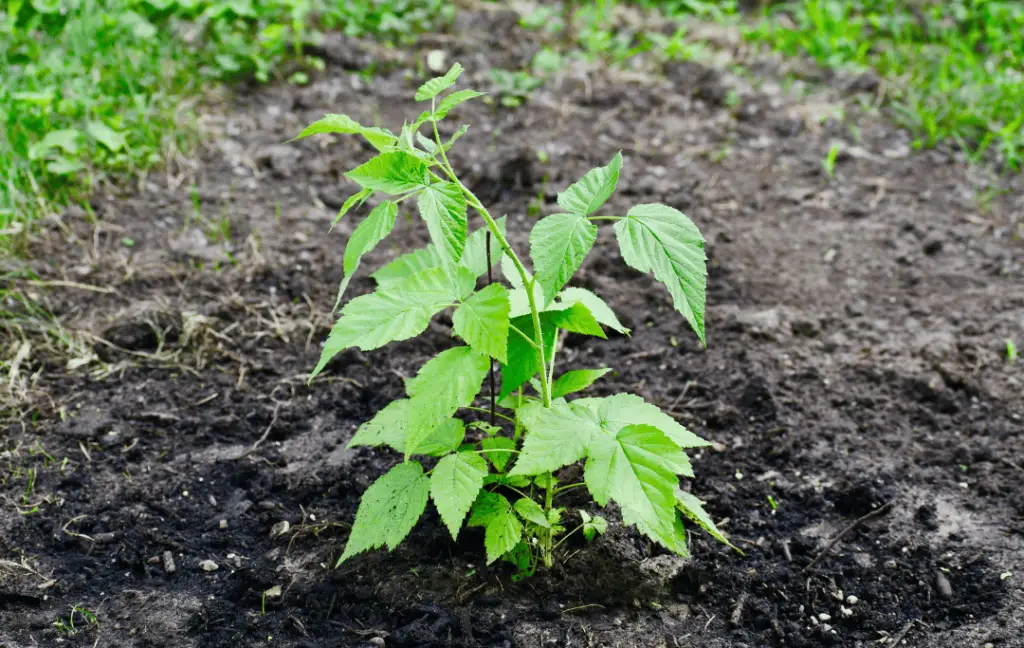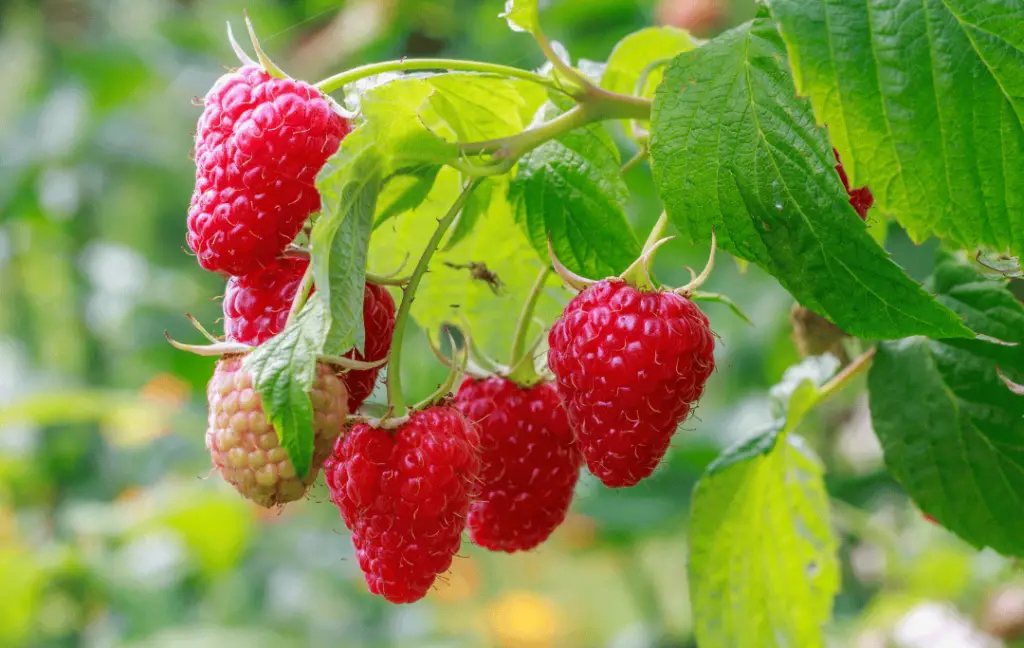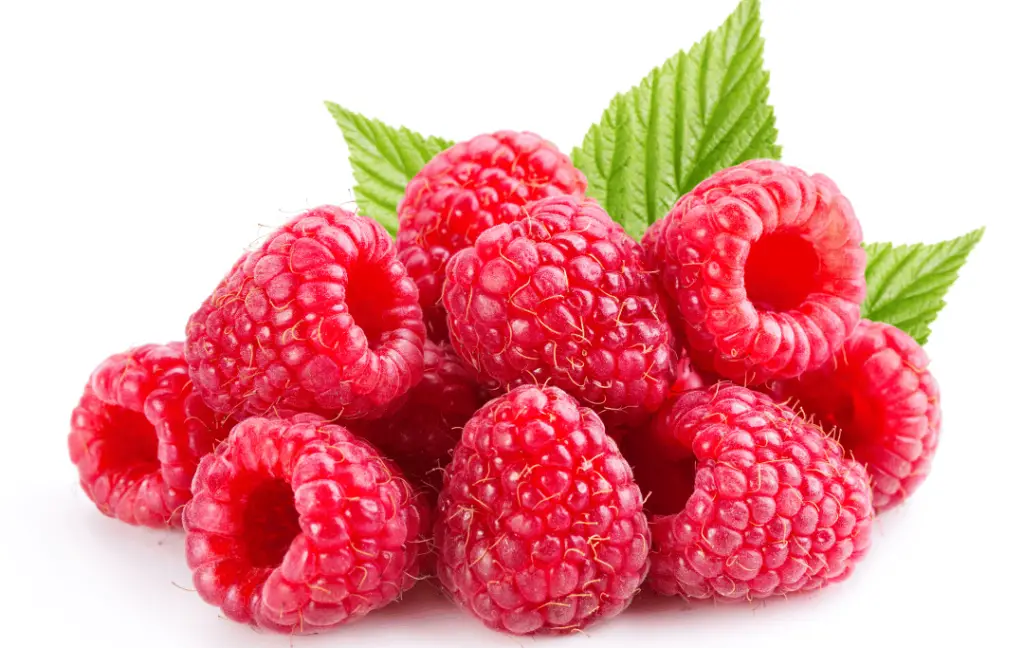
When is the Best Time to Transplant Raspberries, if you’re an avid gardener or just starting to dip your toes into the world of homegrown fruits and vegetables, you may have considered adding raspberries to your garden. These tangy, sweet berries are not only delicious but also relatively low-maintenance once established. However, like any other plant, raspberries sometimes need to be transplanted, whether you’re dividing an overgrown patch or moving them to a new location in your garden. But when is the best time to tackle this task? The answer, as with many gardening questions, is: “It depends.” The optimal time for transplanting raspberries can vary based on several factors, including your climate, the type of raspberries you’re growing, and whether you’re moving an established plant or starting with new canes. In this article, we’ll explore the different considerations and provide some general guidelines to help you determine the best time to transplant your raspberry plants for a successful transition.
Understanding Raspberry Plant Types
Before we dive into the nitty-gritty of transplanting raspberries, it’s essential to understand the different types of raspberry plants and their growth habits. Raspberries are generally classified into two main categories: summer-bearing (or June-bearing) and ever-bearing (or fall-bearing). Summer-bearing raspberries, as the name suggests, produce a single crop of berries during the summer months, typically in June or July. These plants have a biennial growth cycle, meaning that the canes (stems) live for two years. In the first year, the canes grow vegetatively, and in the second year, they produce fruit before dying back to the ground. New canes emerge each year from the plant’s root system to replace the old ones. Ever-bearing raspberries, on the other hand, are capable of producing two crops each year: one in the summer and another in the fall. These plants have a perpetual growth cycle, meaning that the canes can continue to produce fruit for multiple years, although their productivity may decline after the second or third year. Understanding the growth habits of your raspberry plants is crucial when determining the best time for transplanting, as the timing can vary between summer-bearing and ever-bearing varieties.
Transplanting Summer-Bearing Raspberries

For summer-bearing raspberries, the ideal time for transplanting is in late fall or early spring when the plants are dormant. This period typically falls between late October and early April, depending on your location and climate.
Transplanting in Late Fall:
Late fall, after the plants have gone dormant but before the ground freezes, is often considered the best time to transplant summer-bearing raspberries. Here are some advantages and considerations for transplanting during this time:
- The plants are fully dormant, which reduces transplant shock and minimizes stress on the plants.
- The cooler temperatures and moist soil conditions are favorable for root establishment before the plants break dormancy in spring.
- You have a larger window of opportunity for transplanting, as the plants remain dormant for an extended period.
- However, you’ll need to work quickly before the ground becomes too cold or frozen, making it difficult to dig and handle the plants.
Transplanting in Early Spring:
If you missed the late fall window or prefer to transplant during the spring months, early spring is another suitable time for moving summer-bearing raspberries. Here are some considerations for spring transplanting:
- Aim to transplant as early as possible, ideally before the new canes emerge and begin growing. This gives the plants ample time to establish their root systems before the growing season kicks into high gear.
- Watch for signs of bud break and new growth, as this indicates the end of dormancy. Transplanting too late in spring can stress the plants and hinder their development.
- Ensure the soil has thawed and is workable to minimize root damage during the transplanting process.
- Provide ample water and mulch after transplanting to help the plants recover and establish themselves in their new location.
Regardless of whether you choose late fall or early spring, it’s crucial to handle the plants gently during the transplanting process and water them thoroughly after replanting. Mulching around the base of the plants can also help retain moisture and suppress weeds.
When is the Best Time to Transplant Raspberries

For ever-bearing raspberries, the optimal time for transplanting is slightly different from summer-bearing varieties due to their perpetual growth cycle. The recommended window for transplanting ever-bearing raspberries is in early spring, before the plants begin actively growing for the season.
Early Spring Transplanting:
Early spring, typically from late March to early April, is often considered the best time to transplant ever-bearing raspberries. Here are some advantages and considerations for spring transplanting:
- The plants are still dormant or just starting to break dormancy, which minimizes stress and transplant shock.
- The cooler temperatures and moist soil conditions are favorable for root establishment before the growing season kicks into high gear.
- Transplanting in early spring allows the plants to become well-established before the summer heat sets in, increasing their chances of success.
- However, you’ll need to monitor the weather and soil conditions closely, as transplanting too early can expose the plants to frost or freezing temperatures, which can damage or kill them.
Late Fall Transplanting:
While early spring is generally preferred for transplanting ever-bearing raspberries, some gardeners may choose to transplant in late fall after the plants have gone dormant. Here are some considerations for late fall transplanting:
- The plants should be fully dormant, with no active growth or fruit production.
- Transplanting in late fall may give the plants less time to establish their root systems before the growing season starts, potentially impacting their vigor and productivity in the following year.
- You’ll need to work quickly before the ground freezes, making transplanting more challenging.
Regardless of the timing, it’s essential to handle ever-bearing raspberry plants with care during the transplanting process and provide ample water and mulch after replanting to help them recover and establish themselves in their new location.
Factors to Consider When Transplanting Raspberries

In addition to the plant type and growth habits, several other factors can influence the best time to transplant raspberries in your specific garden situation. Here are some important considerations:
Climate and Growing Zone:
Your local climate and growing zone can play a significant role in determining the optimal transplanting time for raspberries. In colder regions with longer winters, late fall transplanting may not be advisable, as the plants may not have enough time to establish their root systems before the ground freezes. In these cases, early spring transplanting is often the better option. Conversely, in milder climates with shorter winters, late fall transplanting may be more feasible, as the plants can continue establishing their roots throughout the winter months.
Soil Conditions:
The condition of your soil can also impact the success of raspberry transplanting. Ideally, you’ll want to transplant when the soil is moist but not waterlogged or frozen. Well-draining soil is essential for raspberry plants, as they can be susceptible to root rot in overly wet conditions. If your soil is heavy or poorly draining, consider amending it with compost or other organic matter before transplanting to improve drainage and aeration. Age and Health of the Plants: When transplanting raspberries, it’s generally easier to move younger, more vigorous plants than older, established ones. If you’re dividing an overgrown raspberry patch, it may be best to transplant the younger canes or portions of the plant, as they will adapt more readily to their new location. Older, woody canes or plants showing signs of disease or stress may not transplant as successfully and may require more care and attention during the transition.
Availability of Water:
Raspberries have relatively high water needs, especially during the establishment phase after transplanting. If you’re planning to transplant during a particularly dry period, ensure that you have a reliable water source available to keep the plants well-hydrated until they become established. Mulching around the base of the plants can also help conserve moisture and suppress weeds, reducing competition for water and nutrients.
Preparing for Transplanting Raspberries
Regardless of the timing, proper preparation is crucial for successful raspberry transplanting. Here are some steps to follow:
Choose a Suitable Location:
Raspberries thrive in well-draining, slightly acidic soil (pH 5.5-6.5) and full sun exposure (at least 6 hours of direct sunlight per day). Select a spot in your garden that meets these requirements and is away from areas with heavy foot traffic or competition from other plants.
Prepare the Planting Area:
Before transplanting, prepare the new planting area by removing any existing vegetation or weeds. Amend the soil with compost or well-rotted manure to improve drainage and fertility. Consider creating raised beds or berms if your soil is heavy or poorly draining.
Dig Up the Plants:
When digging up the raspberry plants you want to transplant, take care not to damage the roots or canes. Use a sharp shovel or garden fork to carefully loosen the soil around the base of the plant, working in a circle and gradually widening the hole as you go deeper. Try to keep as much of the root system intact as possible. If you’re dividing an overgrown raspberry patch, you may need to use pruners or loppers to separate the canes you want to transplant from the main plant. Select vigorous, healthy canes and aim to retain as many roots as possible with each division.
Prepare the Plants for Transplanting:
Once you’ve dug up or divided the raspberry plants, gently shake off any excess soil from the roots. If the roots are excessively long or damaged, you can trim them back slightly with clean pruners. It’s also a good idea to prune back any excessively long or damaged canes, leaving only the healthy, vigorous ones. This will help the plant focus its energy on establishing a strong root system in its new location.
Transplant the Raspberries:
Dig a hole in the prepared planting area that is slightly wider and deeper than the root system of the raspberry plant. Create a small mound or ridge in the center of the hole to spread the roots over. Carefully place the raspberry plant in the hole, spreading out the roots over the mound or ridge. Backfill the hole with the prepared soil, gently firming it down around the base of the plant to eliminate air pockets. Space summer-bearing raspberries about 2-3 feet apart in rows that are 6-8 feet apart. Ever-bearing raspberries can be spaced slightly closer, about 2 feet apart in rows that are 5-6 feet apart.
Water and Mulch:
After transplanting, water the raspberry plants thoroughly to settle the soil and hydrate the roots. Apply a 2-4 inch layer of organic mulch, such as wood chips or shredded bark, around the base of the plants. This will help retain moisture, suppress weeds, and regulate soil temperatures.
Provide Ongoing Care:
During the first year after transplanting, raspberries will require consistent moisture and may need additional water during dry periods. Monitor the plants closely and water deeply when the top inch or two of soil becomes dry. Fertilize the plants according to their specific needs, typically with a balanced fertilizer or compost in early spring. Prune out any dead, damaged, or overcrowded canes to encourage healthy growth and productivity. With proper care and attention, your transplanted raspberry plants should establish themselves and begin producing their delicious fruit within the first year or two in their new location.
Troubleshooting Transplant Issues

Even with careful planning and preparation, raspberry transplants may sometimes face challenges or setbacks. Here are some common issues to watch for and tips for addressing them:
Transplant Shock:
Transplant shock is a common occurrence when moving plants, and raspberries are no exception. Symptoms may include wilting, yellowing or browning leaves, and a general lack of vigor or growth. To minimize transplant shock, handle the plants gently during the transplanting process, water consistently, and provide shade or protection from direct sun and wind if necessary.
Root Damage or Desiccation:
Raspberries have relatively shallow, fibrous root systems that can be easily damaged during transplanting. Exposed roots can also dry out quickly, leading to plant stress or death. When digging up or handling raspberry plants, take care to minimize root disturbance and keep the roots covered or moist until replanting.
Pest or Disease Problems:
Transplanting can sometimes introduce pests or diseases from the previous location or expose the plants to new pathogens in their new environment. Watch for signs of insect infestations, fungal diseases, or viral infections, and take appropriate measures to control or treat any issues promptly.
Environmental Stressors:
Factors such as extreme temperatures, drought, or excessive moisture can stress transplanted raspberry plants and impede their establishment. Provide adequate irrigation or drainage as needed, and consider using row covers or other protective measures in extreme weather conditions.
Lack of Fruiting:
If your transplanted raspberry plants fail to produce fruit in their first year or two, don’t panic. It’s not uncommon for raspberries to focus their energy on establishing a strong root system and vegetative growth before setting fruit. With proper care and patience, fruiting should resume in subsequent years. By being aware of potential transplant issues and addressing them promptly, you can increase the chances of success when moving or dividing your raspberry plants.
Caring for Established Raspberry Plants

Once your transplanted raspberries have become established in their new location, it’s important to provide them with the proper care and maintenance to ensure their ongoing health and productivity. Here are some key considerations for caring for established raspberry plants:
Pruning:
Proper pruning is essential for maintaining vigorous growth and maximizing fruit production in raspberry plants. The specific pruning techniques will depend on whether you’re growing summer-bearing or ever-bearing varieties. For summer-bearing raspberries, prune out the old, fruited canes after harvest in late summer or early fall. Leave the new, vegetative canes to overwinter and produce fruit the following year. For ever-bearing raspberries, prune out the old, fruited canes in late winter or early spring, leaving the new canes to produce fruit during the upcoming season. In both cases, thin out any overcrowded, weak, or damaged canes to improve air circulation and prevent disease.
Fertilization:
Raspberries are heavy feeders and will benefit from regular fertilization. Apply a balanced fertilizer or well-rotted compost in early spring, following the manufacturer’s recommendations or a soil test report for your specific plants. Avoid over-fertilizing, as this can lead to excessive vegetative growth at the expense of fruit production.
Irrigation:
Raspberries have relatively shallow root systems and require consistent moisture, especially during fruiting and periods of hot, dry weather. Aim to provide about 1-2 inches of water per week, either through rainfall or supplemental irrigation. Mulching around the base of the plants can help retain moisture and suppress weeds, reducing competition for water and nutrients.
Pest and Disease Management:
Like any other crop, raspberries can be susceptible to various pests and diseases. Common issues include cane borers, spur blight, verticillium wilt, and viruses. Implement integrated pest management practices, such as crop rotation, removing and destroying infected plant material, and using approved organic or chemical controls when necessary.
Winter Protection:
In colder climates, raspberry canes may need some protection from extreme winter temperatures and wind. After pruning, carefully bend the canes down and cover them with a thick layer of mulch or a row cover to insulate them from freezing temperatures. In milder regions, winter protection may not be necessary, but it’s still a good idea to mulch around the base of the plants to protect the roots. By following these care and maintenance practices, your established raspberry plants will continue to thrive and reward you with an abundant harvest of delicious berries for years to come.
Result
Transplanting raspberries can be a rewarding task that allows you to expand or reorganize your berry patch, but it requires careful planning and attention to timing. While the optimal transplanting period can vary based on factors like climate, plant type, and soil conditions, following some general guidelines can increase your chances of success. For summer-bearing raspberries, late fall or early spring is typically the best time to transplant, while ever-bearing varieties are often best moved in early spring before they break dormancy. Regardless of the timing, proper preparation, gentle handling, and consistent aftercare are essential for minimizing transplant shock and helping your raspberry plants establish themselves in their new location. With patience and the right techniques, you can successfully transplant your raspberries and enjoy a bountiful harvest of these tangy, sweet berries for years to come.






